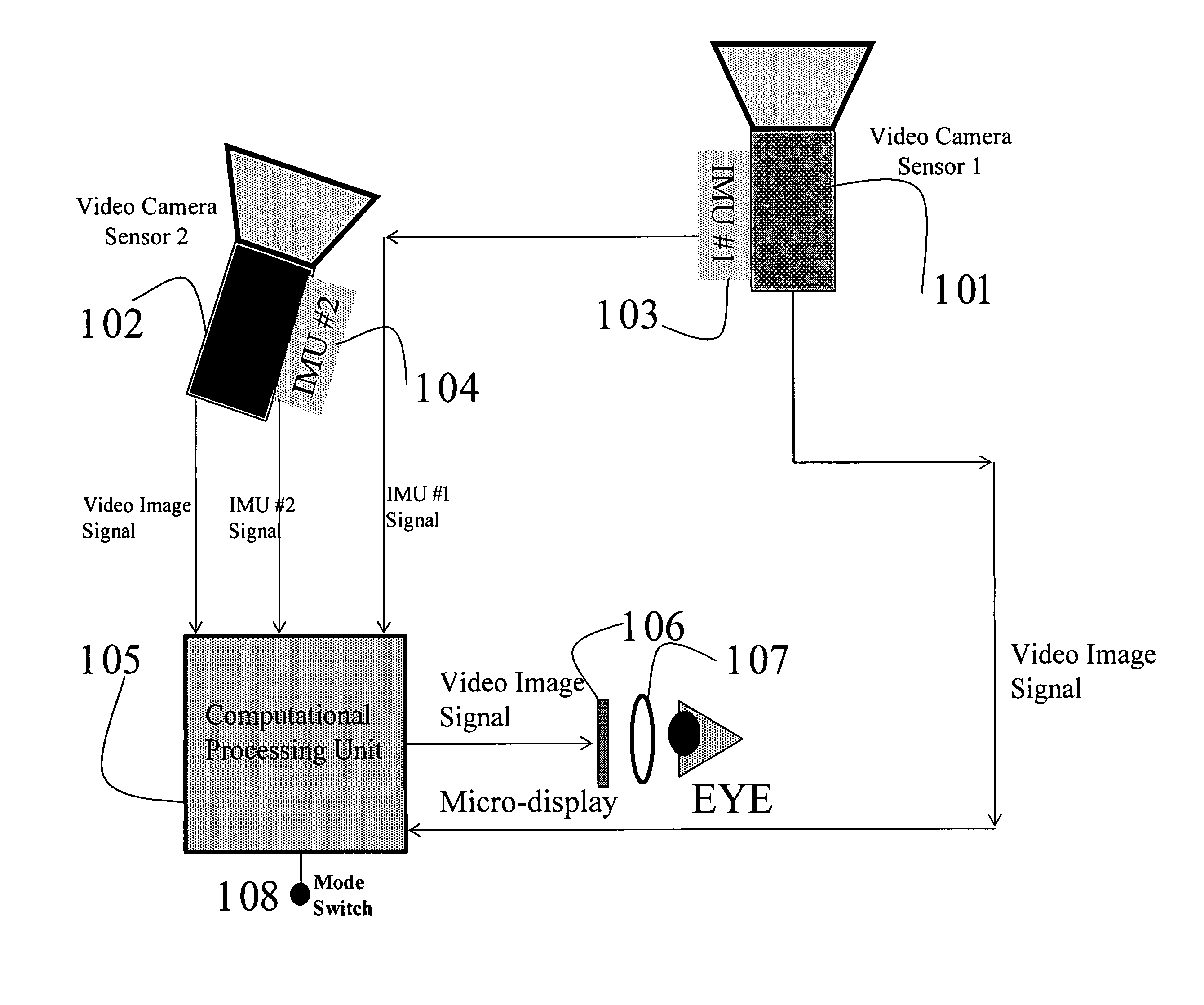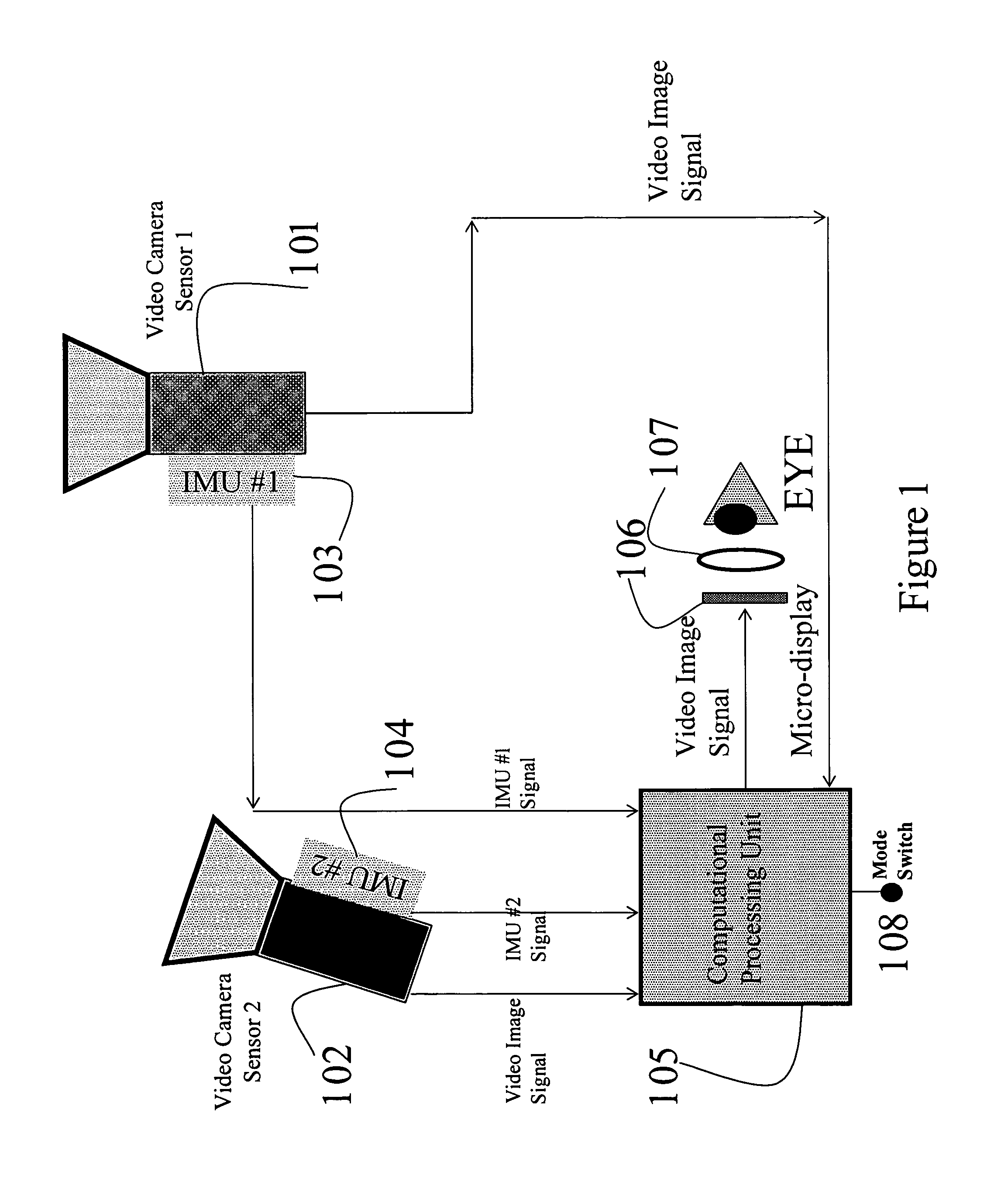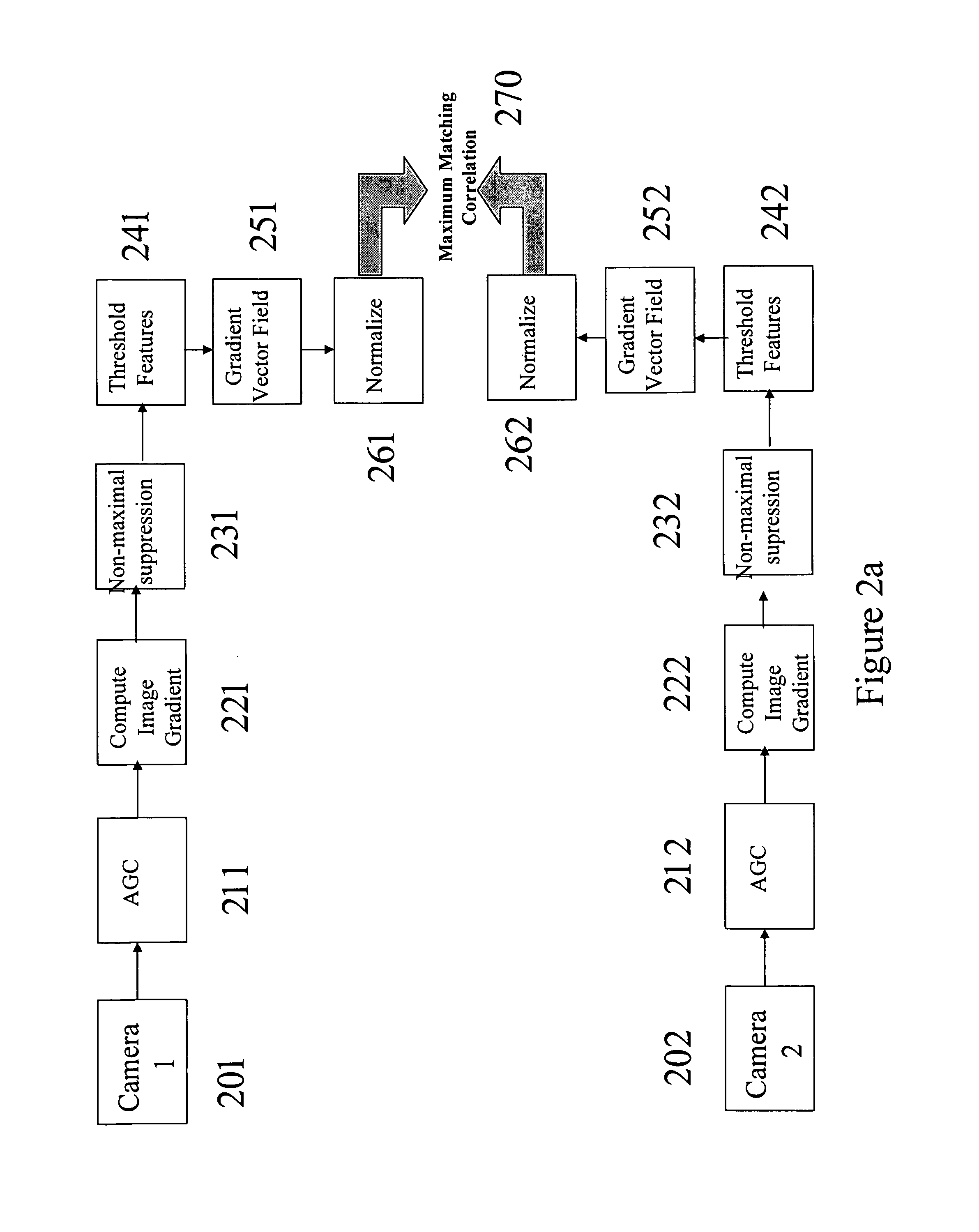Method and apparatus for dynamic image registration
a dynamic image and registration method technology, applied in the field of image co-, can solve the problems of not being able to mechanically match these axes, requiring a more complex calibration procedure, and the relative orientation of the two cameras is more complicated, so as to reduce or virtually eliminate the drift refine the registration more finely, and reduce the effect of intrinsic sensor nois
- Summary
- Abstract
- Description
- Claims
- Application Information
AI Technical Summary
Benefits of technology
Problems solved by technology
Method used
Image
Examples
Embodiment Construction
[0021]FIG. 1 shows a diagram consisting of two cameras 101 and 102, any one of which could be Visible, Intensified, VisNIR, SWIR, MWIR or an LWIR camera within proximity of each other but not necessarily collocated or boresighted. Camera 101 has rigidly attached Inertial Measurement Unit (IMU) (e.g., made by the companies Microstrain or InterSense) 103 and camera 102 has rigidly attached IMU 104 used to measure the relative orientation of the two cameras. Signals from IMUs 103 and 104 are passed to computational processing unit 105 that are related to the yaw, pitch and roll angular orientation of each IMU. Measurement of the relative orientation of IMUs 103 and 104 (and therefore cameras 101 and 102) is derived by the computational unit 105. This computational processing unit could be a general purpose PC, a Single Board Computer, an FPGA customized board or an ASIC, but is not limited to be one of these. In many cases the relative orientation measurement from IMUs 103 and 104 is n...
PUM
 Login to View More
Login to View More Abstract
Description
Claims
Application Information
 Login to View More
Login to View More - R&D
- Intellectual Property
- Life Sciences
- Materials
- Tech Scout
- Unparalleled Data Quality
- Higher Quality Content
- 60% Fewer Hallucinations
Browse by: Latest US Patents, China's latest patents, Technical Efficacy Thesaurus, Application Domain, Technology Topic, Popular Technical Reports.
© 2025 PatSnap. All rights reserved.Legal|Privacy policy|Modern Slavery Act Transparency Statement|Sitemap|About US| Contact US: help@patsnap.com



